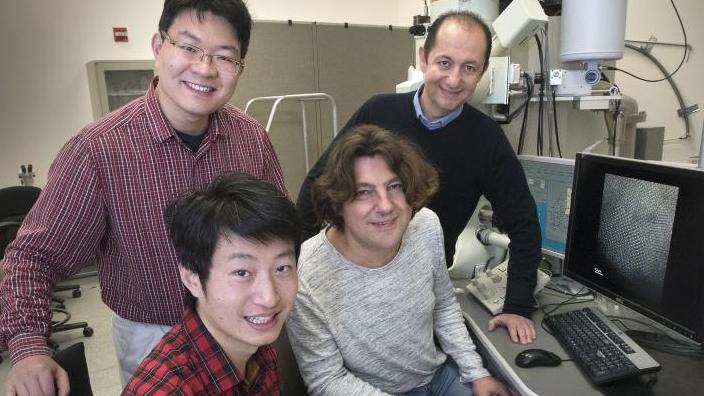Professor Oleg Gang featured in Brookhaven National Laboratory's Top-10 Science Successes of 2016
DNA Shaping Up to be Ideal Framework for Rationally Designed Nanostructures.
In a series of papers, Brookhaven scientists working at the Lab's Center for Functional Nanomaterials (CFN) used DNA as a programmable nanoscale building material, driving particles measuring just billionths of a meter to self-assemble into a wide variety of three-dimensional lattice structures. The scaffold-like frames made of DNA can even form interconnecting modules, or hold nanoparticles inside with DNA arms as programmable cages. The scientists verified the frame structures and nanoparticle arrangements using cryo-electron microscopy (a type of microscopy conducted at very low temperatures) at the CFN and Brookhaven's Biology Department, and x-ray scattering at the National Synchrotron Light Source II (NSLS-II). In each case, the external and internal binding properties and shapes of the precisely designed DNA frames control the structure of the resulting assemblies. This gives the scientists a way to engineer different lattices and architectures without having to manipulate the individual particles. The method opens up opportunities for rationally designing nanomaterials with optical, electric, and/or magnetic properties that can be enhanced or optimized by precisely organizing functional components. Some examples include targeted light-absorbing materials that harness solar energy, or magnetic materials that increase information-storage capacity.
For more information, please visit the Brookhaven National Laboratory website's newsroom.

